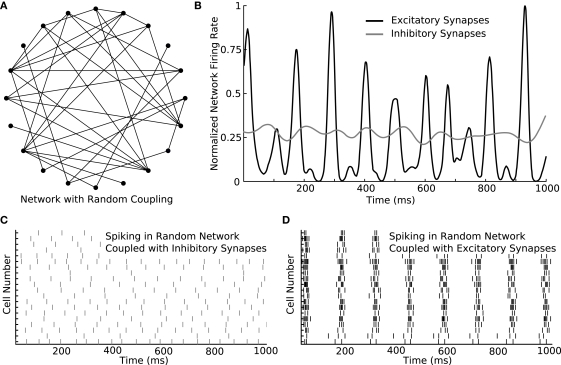Figure 4.
Switching parameters in a larger network produces diverse activity patterns. (A) An example of a larger network containing 20 neurons coupled randomly. In the diagram, filled circles represent cells and lines represent synapses. Synaptic direction is not indicated. The connection probability between each cell pair is 20%. (B) The 20-cell network is simulated with either excitatory or inhibitory synapses. While the total amount of spiking is similar in both simulations, the instantaneous rate differs considerably between the simulations. While the rate is nearly constant over time with inhibitory synapses, the rate rapidly changes in a burst-like pattern with excitatory synapses. (C) Rastergram of spiking in the network when inhibitory synapses are used. Spike rate remains approximately constant over time. (D) Rastergram of spiking when excitatory synapses are used. The network bursts periodically. As single-neurons fire, they recruit their post-synaptic partners until every member of the network is activated. After a brief period of activation, the cells become refractory together and the network becomes nearly silent until the cycle repeats.

